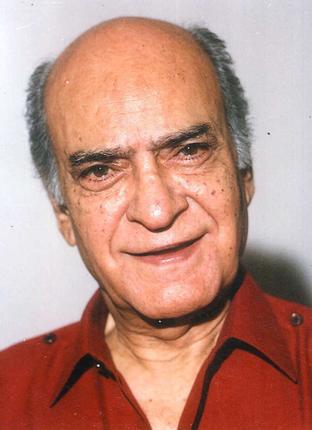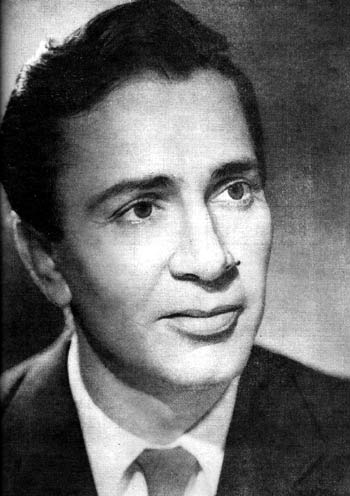Remembering A..K. Hangal And Balraj Sahni
By Vidyadhar Date
28 August, 2012
Countercurrents.org
It is perhaps just as well that Bollywood superstars did not attend the cremation of Mr A.K. Hangal, the grand old of films, theatre and the Left movement, on August 26 though it was in Juhu, fairly close to their luxury homes. They did not deserve to be dignified by his last presence on earth.
One says this because he belonged to an utterly different ideological spectrum and had a long history of participation in the freedom struggle and the Communist movement like Balraj Sahni, another distinguished film actor, whose birth centenary begins in Mumbai on August 30.
 Hangal was secretary of the Karachi unit of the then undivided Communist party in 1946 when he met Rajni Palme Dutt, then vice chairman of the British communist party and author of the reputed work on Indian history, India Today. Hangal recalls in his autobiography that it was at the instance of Dutt that Nehru declined to meet Mussolini at the latter’s invitation in Rome. Any contact with Mussolini would damn Nehru’s reputation, Dutt had warned. Nehru wisely kept to himself when the plane stopped in Rome.
Hangal was secretary of the Karachi unit of the then undivided Communist party in 1946 when he met Rajni Palme Dutt, then vice chairman of the British communist party and author of the reputed work on Indian history, India Today. Hangal recalls in his autobiography that it was at the instance of Dutt that Nehru declined to meet Mussolini at the latter’s invitation in Rome. Any contact with Mussolini would damn Nehru’s reputation, Dutt had warned. Nehru wisely kept to himself when the plane stopped in Rome.
<< A.K. Hangal
Hangal had already made a name for himself in Karachi as a theatre actor as well. When he came to Mumbai after partition he was roped into reorganizing the left wing theatre group Indian People’s Theatre Association by R.M. Singh, a highly committed director. There had been differences among membes. K.A.Abbas had left, IPTA, Balraj Snhani and friends had formed a separate grup, Habib Tanvir was thinking of acquiring training abroad, Dina Gandhi was thinking of joining the professional Gjujarati stage in Ahmedabad, the Marathi folk theatre stalwarts Amar Shaikh, Annabhau Sathe and Gavankar had formed their own separate group.
Hangal has given a lot of insights into the political movement and theatre of the last so many decades in his highly readable autobiography Life and Times of A.K. Hangal. I am lucky I have a signed copy of the book presented by him to me.
Many of today’s film stars look so puny in comparison with Hangal and Balraj Sahani. Balraj was unusual in many ways. Apart from being an excellent actor, he was a good writer, had studied in Shanti Niketan, was close to Mahatma Gandhi for some time before becoming an ardent Communist, went to jail for his activism and some times he was released from jail to enable him to attend his film shootings. . He would have been profoundly disturbed by the ideological dilution in a section of the present Parliamentary communist movement.
Among my first memories is of him as a writer was when he participated in a seminar organised by the Sahitya Akademi to mark 25 years of India literature in the post-independence era at Mumai Marathi Grantha Sangrahalaya in Dadar, an excellent library of Marathi books and journals now in decline. . Above all, he was a marvelous human being, he could genuinely identify himself with the downtrodden. There was nothing fake about him.
It was appropriate that A.K. Hangal released the Marathi translation of Sahani’s autobiography rendered by Ambarish Mishra, a writer with rare proficiency in both English and Marathi a few years ago. There was much in common between Hangal and Balraj apart from ideology and film careers. Both were strongly committed to communal harmony. Balraj spent days in Bhiwandi during the worst days of communal rioting there and worked hard to restore peace.
 It is highly appropriate that the Marathi translation of Balraj’s book has been dedicated to Shambhu Mahato, the main character in the reputed film Do Bigha Jamin, who is reduced from a farmer to a rickshaw puller in Kolkata. The Bimal Roy film of 1953 was the high water mark of Sahani’s acting like his role in Garm Hawa made two decades later.
It is highly appropriate that the Marathi translation of Balraj’s book has been dedicated to Shambhu Mahato, the main character in the reputed film Do Bigha Jamin, who is reduced from a farmer to a rickshaw puller in Kolkata. The Bimal Roy film of 1953 was the high water mark of Sahani’s acting like his role in Garm Hawa made two decades later.
<< Balraj Sahni
Sahani traveled third class by train with his wife and some members of the unit for the shooting of Do Bigha Jamin as part of his preparation for the film. He wanted to see from close quarters the lives of farmers. The first thing he did in Kolkata was to reach the office of the rickshaw union where he was taught how to pull a rickshaw. It requires less skill much more labour. Besides, pulling the vehicle in the mad rush is tough.
The chapter on the film is among the most readable in the book. Balraj recalls that the whole shooting used to take place on the streets but without much fuss. The camera was placed in a truck and many people did not know a film shooting was going on. Some would straighaway sit in his rickshaw. . It was agonizing to pull the weight walking bare feet on the hot road. Another touching depiction is about visiting the house of Nergis to mourn the death of her mother Jaddanbai, who was not only a fine artiste but also a good human being with sympathy for the progressive movement. Sahani was in jail for his political activism and he had a hard time persuading a policeman to take him to the house. The bait that the policeman could see other film stars worked. Unfortunately, many film personalities were unaware that one of their artistes is in prison for his left wing politics. So, it is not surprising that the superstars of the Hindi film world remained away from Hangal’s funeral. .
Vidyadhar Date is a senior journalist and author of the book Traffic in the era of climate change. Walking, cycling, public transport need priority. [email protected]
Comments are moderated


